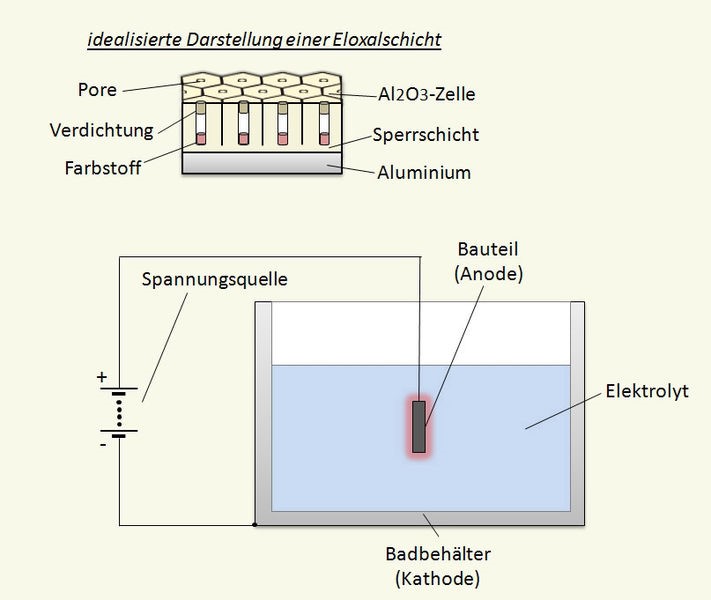Anodising is a surface treatment for metal products that is used to improve their qualities, such as by imparting wear resistance, corrosion resistance, low friction and decorative appearance.

The basic technique is to immerse the surface in a strong acid while an electric current is applied to pit and oxidise its surface. Varying the type and concentration of acid, the strength of the current, the temperature and other conditions can reliably produce a surface with carefully tailored characteristics. Additional additives and subsequent coatings extend the range of possibilities even further. Because the oxides created are structurally integrated into the raw metal beneath, anodised surfaces don’t chip or peel like other kinds of surface treatment.
In practice, there are three common categories of anodised products: chromic anodised, grade II anodised and grade III hard anodised. The first uses chromic acid, and the latter two mostly use sulphuric acid. A “hard” anodised surface uses a higher current and a lower temperature and allows the process to proceed further, providing a deeper layer of anodisation. Hard anodised aluminium has a hardness, strength and wear resistance ideal for demanding applications and environments, and it finds many uses in precision engineering, automotive industries and aerospace.
Hard anodising PTFE
Anodising works very well when combined with other materials, one of which is polytetrafluoroethylene, or PTFE, a synthetic fluoropolymer marketed as “Teflon”. PTFE consists entirely of carbon and halide atoms, has a high molecular weight, is hydrophobic (it repels water and other fluids), and has one of the lowest coefficients of friction of any solid material (apparently it is the only material that geckos can’t climb). Chromate, nickel acetate, sealants and decorative dyes can also be incorporated into anodised finishes. Keep reading types of engineering.

Benefits
Some of the advantages of hard anodising PTFE into metal surfaces are obvious – they have exceptionally low friction and are hard-wearing. Corrosive fluids struggle to even adhere, so they have excellent corrosion resistance. For the same reason, even bacteria fail to cling; consequently, hard anodising PTFE is the finish of choice for many implants and surgical devices.
Engines, motors and machinery constructed of anodised components can deliver several other benefits. By offering exceptionally low friction, they generate less heat and consume less fuel in operation. Because PTFE can be incorporated into the surface, they often require little or no additional lubrication, making them low maintenance, economical, and environmentally friendly.

